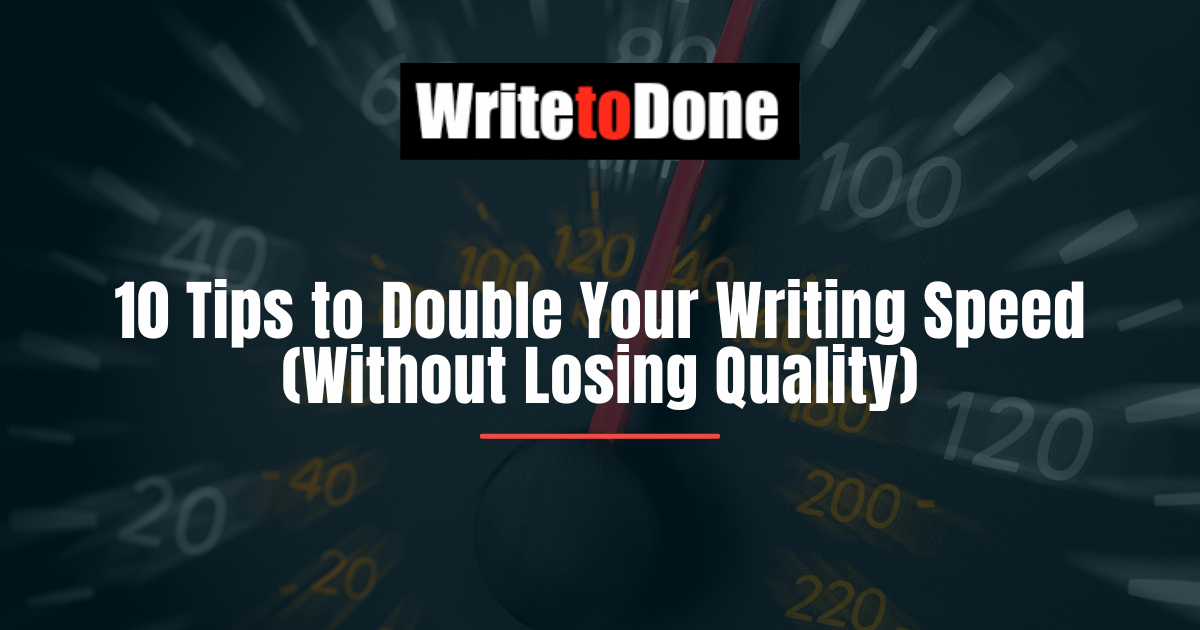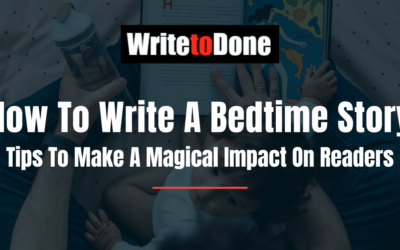Do you want to double your writing speed– without losing quality?
As a writer and blogger, I need to write a lot of articles. Fast. Not only do I need a flow of good ideas, I also need time to turn the initial ideas into useful blog posts. It’s sometimes a struggle.
Here are 10 tips that can help you double your writing speed:
Step 1: Maintain a swipe file of good posts
Whenever you see an attractive post, add it to a swipe file. You can create a swipe file in Word, or in any other writing program.
The post you save may be about something that’s completely outside of your blog topic, but it may contain elements that you can use for a blog post – and it will trigger new post ideas.
Step 2: Create an ‘ideas file’
I carry a notebook around with me at all times in order to capture ideas. Good ideas are fleeting and don’t hang around. Once you’ve got them down on paper, or have made a digital note, the brain will start to chew on the idea. It’s best if you add a few key thoughts to your initial idea straight away. I’ve found cryptic notes long after I had the initial idea, such as “Write Like Spaghetti”. Er – what?? If I had just added one sentence, it might have made sense.
Step 3: Don’t sit down and start writing
Don’t write now! If you do that, writing will feel like a grind. Worst case, you’ll sit there, nibble at your nails, feel blocked and frustrated – and absolutely nada, nichts, nothing will happen. Or you’ll start to write something that hares off in the wrong direction. So, don’t write now. What you need to do now, is to put your subconscious to work.
Step 4: Put your subconscious to work
In order to prime the pump of your creativity, get out your ‘ideas file’, as well as your ‘swipe file’ of posts. Look through your ‘ideas file’ and see what leaps out at you. Then idly browse through your swipe file. You’ll find that ideas start to appear. Write down a couple of sentences, or a headline of what you want to write about. This step should not take more than 15 minutes. When you have written a few sentence or a headline, stop and do something else. Put your task away.
Step 5: Let your mind ferment
Once you’ve completed step 4, you need to let your mind ferment.The mind has a natural desire to solve problems and come up with idea. There are some things you can do in order to get your brain to become creative. The mind responds well to a brisk walk or a run. Sleep is also helpful. Just don’t sit around and try to think about your article!
Step 6: Start writing
When you pick up your piece again, you’ll be ready to write. But don’t start at the beginning. Start anywhere else! Because the introduction to a piece needs special attention and has to be well crafted. It’s much easier to put together an introduction, once you’ve written the heart of the article.
Step 7: What to do if your writing is lousy
At this stage in your creative process, ‘bad’ writing is good! Just put anything that occurs to you on to the page – the badder, the better 🙂 What’s helpful now is to write to a certain word count. Let’s say that you’ve determined ahead of time that your article is going to be 500, or 700, or 1200 words long. Your task in step 7 is to fill the quota you’ve set yourself.
It doesn’t matter whether your writing is lousy or luminous.
Just write the requisite words, without going back and correcting anything. This ensures that you activate the right hemisphere of your brain . It’s the one that supports creativity. If you start analyzing and correcting, you’ll activate the left side and your creativity and spontaneity will dry up in a flash.
Once you’ve arrived at the requisite word count, stop doing anything more to the piece. Do something else instead.
Step 8: Switch on the Editor
Give yourself a good night’s sleep before tackling your post again. Or, if you need to crank the piece out in one day, make sure you take a break before you start Step 8. In this step you’re going to forget about being a writer; you’re going to look at what you wrote with the eyes of an editor.
- Check out the structure: do you have an introduction, a main development, and a closure?
- Check the flow of the piece. Do you lead from one piece of information to the next, or do you jump around – and leave your readers behind?
- Check out each sentence. Is grammar and spelling correct? Are some words redundant? Could you express yourself more succinctly? Could you simplify?
Step 9: Read the piece aloud.
When we read out aloud, we can discover the bumpy bits, and the places where the piece refuses to flow. If you have someone you trust, read the piece aloud to them. It will sharpen your own perception of what you’ve written. But don’t worry – you can also read to yourself.
Step 10: The final check
In order to fine-tune your piece, you’ll need to do a final check. There are two ways that work really well. If you’ve written a blog post, publish a draft and then read it as if you were someone who had just arrived at your blog. Another way to get a clear impression of your work, is to paste the piece into the body of an email and send it to yourself. Spelling mistakes will jump out at you when you see your article in an unfamiliar format.
These ten steps will insure that you can write easily and fluidly. Breaking up the writing process into three distinct parts is a great way to create top-quality articles.
What are YOUR tips to double your writing speed?
















